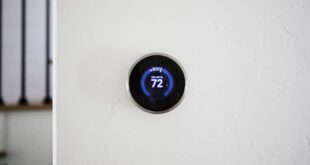Today, a lot of homeowners and management companies are prioritizing eco-consciousness. In addition to helping the environment, it can also mean big savings on energy bills. Most importantly, eco-conscious building materials and upgrades are healthier for anyone who is going to spend a lot of time indoors. Green building practices also benefit the community by reducing pollution and preserving precious resources.
How can you make changes in your home or office to make it more sustainable? Let’s explore some of the most effective approaches you can take in order to embrace a greener lifestyle through renovations:
Getting Started on Home and Office Upgrades
There’s almost no end to the eco-conscious improvements you can make to your home. For the sake of your budget, though, start where you need it most. To figure out exactly where that is, have a pro come in to conduct a home energy audit (and make sure you know how to vet contractors). Several aspects of your home will be inspected, including:
- Appliances
- Foundation
- Roofing and walls
- Doors and windows
- Ducts
- HVAC systems
- Water heating system
- Favorability for solar power
This will tell you where you need to focus your energy to save energy. For example, if your appliances are already efficient, you don’t want to waste the money on replacing them. Instead, you could put your budget toward more pressing needs, like upgrading windows and doors to cut down on heating and cooling costs.
Also, make sure you’re realistic about what you can accomplish. It’s wonderful to have dreams of eco-friendly living, but if you get halfway through a project and then discover you can’t afford the rest or you don’t actually have the skills you thought you did, you’ll be living or working in an uncomfortable space for who knows how long. Proper planning and getting the advice of pros will help you avoid “scope creep,” which is when the scope of a project unexpectedly expands while it’s in progress.
Improve the Air Quality of Your Home
When it comes to air quality, you’ll hear “VOC” mentioned a lot. This stands for volatile organic compounds — i.e., the junk you don’t want to breathe in. To improve air quality, you have to reduce VOCs as much as possible and then take care of the rest through filtration and ventilation. For the former, you can choose materials that have low-VOCs; for the latter, indoor plants that remove harmful chemicals from the air will help.
Here are three important areas where you can improve air quality:
- Carpeting is not great for air quality because it catches dust, pet hair, and other debris. If you have to have carpeting, choose wool or another natural material.
- Today, acrylic and latex paints tend to be low-VOC or VOC-free. While it’s harder to find oil-based paints, know that if you do opt for them, they will contain VOCs.
- Some building materials contain formaldehyde, particularly particleboard and plywood. Natural wood doesn’t which makes it a good choice. Alternatively, you can look for another type of formaldehyde-free building material.
Furthermore, you also want to make sure that there isn’t asbestos in your home, which has particles that are dangerous to breathe in. This is common in older homes, particularly in the roofing and walls (some cleaning products contain asbestos, too). You’ll want a professional to assess your home for asbestos to let you know where it can be left alone and where it should be removed.
Consider a Tiny, 3D-Printed Home
Does anything scream, “It’s the future!” more than the thought of printing your home? Tiny houses save costs in two major ways: first, they’re less expensive to build, and second, they’re much easier on utilities (and the environment). There’s less square footage to heat and cool; fewer bathrooms and faucets mean less water; and there isn’t a ton of space to light. As a bonus, you’ll probably pay fewer taxes, too!
If the minimalist tiny house movement calls to you, you’ll be thrilled to know that these homes can now be 3D printed with concrete. Or you can simply look for an existing tiny home (or office space) in the location where you’d like to live.
3 Super Simple Fixes for a Greener Space
Can’t spare the cost to build an entirely new living or work space? There are easy ways to upgrade your current home or office to become more eco-conscious. Consider these super-simple fixes to create a more sustainable space:
- Replacing faucets and showerheads with low-flow alternatives will conserve water and lower your bills. On the same note, make sure that your plumbing system is regularly maintained.
- There are a few different ways to manage the temperature of your home or office so that you can reduce energy consumption and your utility bill. Install ceiling fans so that you don’t always rely on air conditioning; keep your HVAC systems maintained so they run efficiently; and use a smart thermostat for easier control of indoor temperatures.
- Whether you work from home or you’re making your office more eco-conscious, chances are that you have a lot of paperwork to get rid of. Paperwork and files, especially those with sensitive information, can be shredded and then recycled. Since you can’t put shredded paper in a regular recycling bin, it’s best to work with a professional shredding service that will shred paperwork in large batches and then transport them to recycling facilities.
Modern architects, manufacturers, builders, and property owners know how important it is to have healthy, safe, energy-saving living and work spaces. With smart planning and the help of experts, you can start creating a healthier and more eco-conscious lifestyle. Start with the areas that you’ll spend the most time and need the most help, like your office or living space.
 Alternative Energy HQ solar power for homes, wind energy, and bio fuel issues
Alternative Energy HQ solar power for homes, wind energy, and bio fuel issues









One comment
Pingback: Exploring Eco-Conscious Home & Office Upgrades